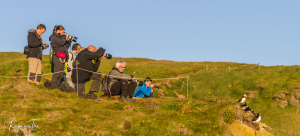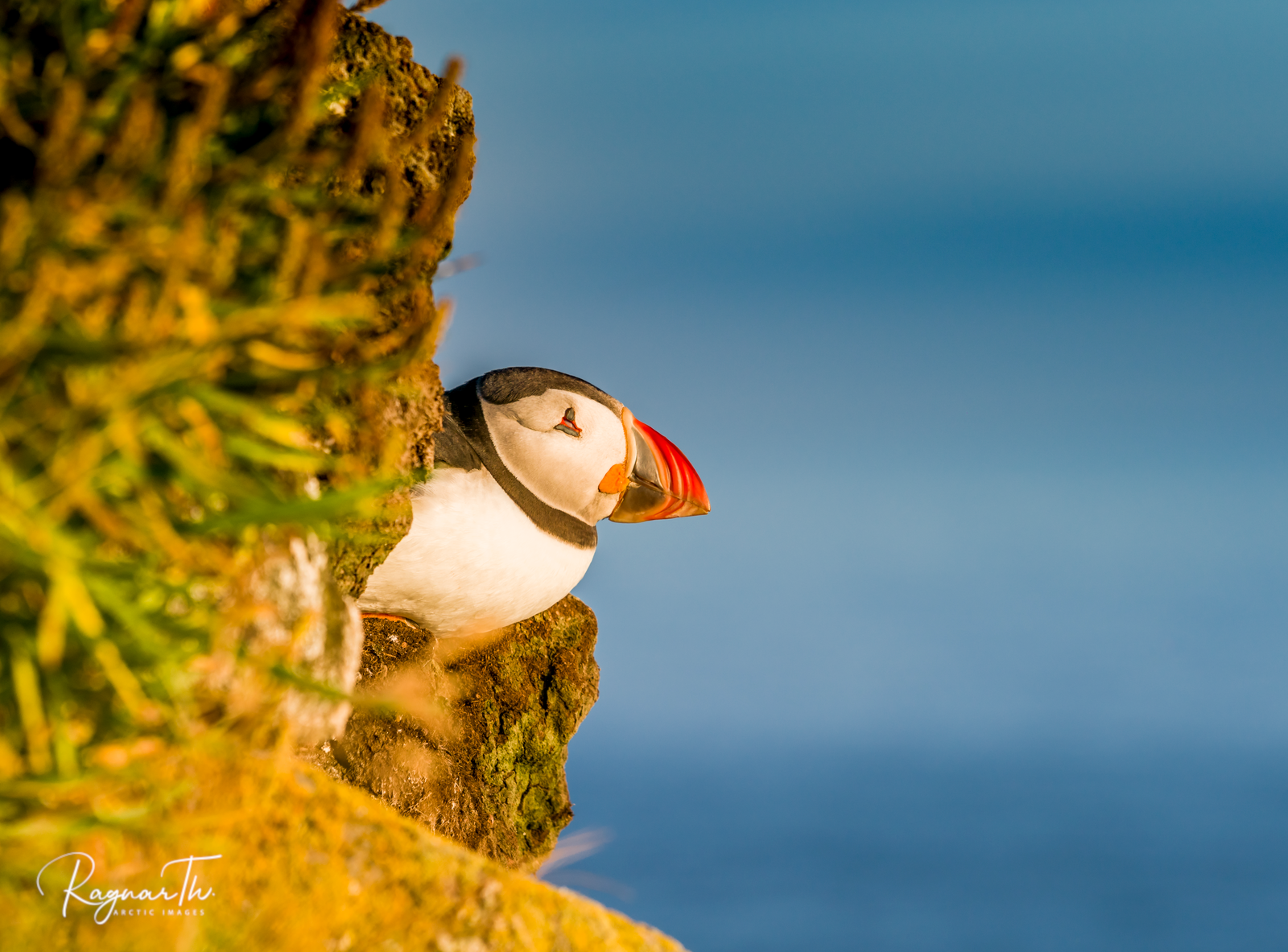For many, a visit to Látrarbjarg is the highlight of any trip to the Westfjords. The main bird cliffs in Iceland teem with sea birds. Látrabjarg is not only the largest sea bird cliff in the country; it also holds that honor in all of Europe. This is a special somewhere, not to be missed.
How do the cliffs stack up?
Rising over 400 meters above the sea and stretching about 14 kilometers along the coastline, these cliffs are an epic scenery. Though many visitors go there mainly to see the cliffs’ most famous habitant – the puffin – they are in for a treat, as millions of seabirds make their home in Látrabjarg cliff. You will spot razorbills, fulmars, guillemots, gannets and more birds. It is an important nesting ground and the birds raise their young here. But the puffins are the standout – and particularly tame.
Respect the birds
With their colorful beaks (though the colors fade after the breeding season) puffins are instantly recognizable, even if you know little about birds. Puffins tend to have a fearless attitude towards humans due to a lack of local predators. As a result, they often approach humans, much to their delight, who are quick to capture a photo. If you ever come close to a puffin, do not be tempted to stroke them. Close to their tail feathers, there is a gland which excretes oil to make their feathers waterproof when they swim. It is crucial that the gland does not wipe off, even by accident. Another thing to remember is that you are not permitted to touch puffin eggs. It is against the law and rightly so.

Know your cliffs
Látrarbjarg’s cliffs are a part of a foursome. Its partners are the cliffs of Keflavíkurbjarg, Bæjarbjarg, and Breiðavíkurbjarg. Each cliff is vertiginously steep, a sheer drop to the rocky shore and wild ocean below. Care is essential. It can be tempting to venture close to the edge, peer over at the puffins on their grassy perches and even capture a crazy photo. But the edges are not stable and the fragile ground can very well give way to the weight of a human, an animal or even the wind. Stand at a safe distance to avoid becoming a casualty.
Take a hike
Away from the edge, the cliff top is a great place for a hike. As long as you stay behind the white lines (or a few meters away later in the season when the lines may have faded), you can enjoy the ocean breeze and a view of the iconic Látrarbjarg lighthouse. The best time to visit, for a chance of half decent weather and to watch the birds, is between May and late August.
Combo tours
In season, there are plenty of tour operators willing to show you the area, such as Westfjords Adventures who operate from Patreksfjördur. Some tours combine the bird cliffs with the excellent museum at Hnjótur. This place showcases Iceland’s seafaring heritage and stories of sailors whose stricken ships had come to grief on Icelandic shores. Another popular combo-experience takes you to the red sands of Rauðisandur, one of the most unusual and utterly photogenic beaches in the country.

Getting there by car
It is also fairly easy to drive to the Westfjords yourself.
- Take the ring road north from Reykjavik, coming off on route 60.
- Travel west as far as Flókalundur where you make a left onto the 62.
- Finally, to reach Látrarbjarg itself, take the gravel road 612 until the road runs out.
Make sure you have plenty of fuel in the tank since there is no gas station nearby. If you wish to visit the birds for two consecutive days, you can stay at the Hotel Breiðavík, located only 12 kilometers away from the cliffs.
The good news is that you do not have to travel all the way to the Westfjords to see what Látrarbjarg is like and to get personal with the birds. Perlan, one of Reykjavík’s most iconic landmarks, houses a 10 meters high replica of Látrabjarg. It is as part of a captivating exhibition about the country’s incredible natural wonders.

